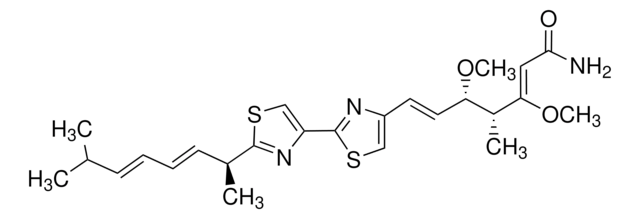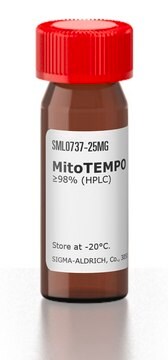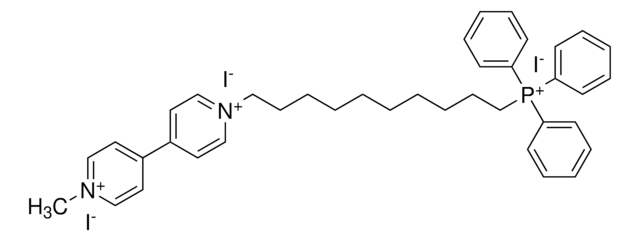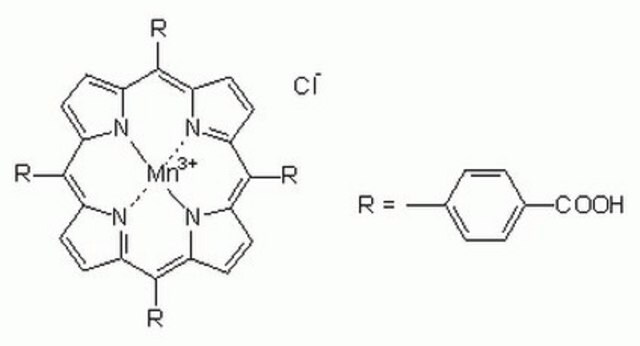SML1554
S3QEL 2
Synonym(s):
1-(3,4-Dimethylphenyl)-N,N-dipropyl-1H-pyrazolo[3,4-d]pyrimidin-4-amine
Sign Into View Organizational & Contract Pricing
All Photos(1)
About This Item
Empirical Formula (Hill Notation):
C19H25N5
CAS Number:
Molecular Weight:
323.44
UNSPSC Code:
12352200
NACRES:
NA.77
Recommended Products
Biochem/physiol Actions
S3QEL 2 is a selective inhibitor of superoxide production from the outer Q-binding site of mitochondrial respiratory complex site III (IIIQo) without altering oxidative phosphorylation.
S3QEL 2 is a selective inhibitor of superoxide production from the outer Q-binding site of mitochondrial respiratory complex site III (IIIQo) without altering oxidative phosphorylation. Site IIIQo is the primary source of mitochondrial reactive oxygen species (ROS) and has been implicated in a broad range of ROS-mediated signaling and pathology. S3QEL 2 lowered HIF-1α induction, protected against ROS-induced, JNK-mediated cell stress in pancreatic beta-cells, and decreased the oxidative stress-induced apoptosis that limits the yield of functional β-cells from intact islets.
S3QEL 2, a cell permeable substituted allopurinol, is also known as 1-(3,4-Dimethylphenyl)-N,N-dipropyl-1H-pyrazolo[3,4-d]pyrimidin-4-amine.
Storage Class
11 - Combustible Solids
wgk_germany
WGK 3
flash_point_f
Not applicable
flash_point_c
Not applicable
Choose from one of the most recent versions:
Certificates of Analysis (COA)
Lot/Batch Number
Don't see the Right Version?
If you require a particular version, you can look up a specific certificate by the Lot or Batch number.
Already Own This Product?
Find documentation for the products that you have recently purchased in the Document Library.
The Inhibitor Index: A Desk Reference on Enzyme Inhibitors, Receptor Antagonists, Drugs, Toxins, Poisons, Biologics, and Therapeutic Leads (2017)
Takujiro Homma et al.
Archives of biochemistry and biophysics, 700, 108775-108775 (2021-01-26)
Ferroptosis is a type of iron-dependent, non-apoptotic cell death, which is typically induced by cysteine starvation or by the inhibition of glutathione peroxidase 4 (GPX4) activity with the accompanying elevation in lipid peroxidation product levels. Despite the central role of
Remi Hatinguais et al.
Frontiers in immunology, 12, 641495-641495 (2021-04-13)
Reactive Oxygen Species (ROS) are highly reactive molecules that can induce oxidative stress. For instance, the oxidative burst of immune cells is well known for its ability to inhibit the growth of invading pathogens. However, ROS also mediate redox signalling
Our team of scientists has experience in all areas of research including Life Science, Material Science, Chemical Synthesis, Chromatography, Analytical and many others.
Contact Technical Service








